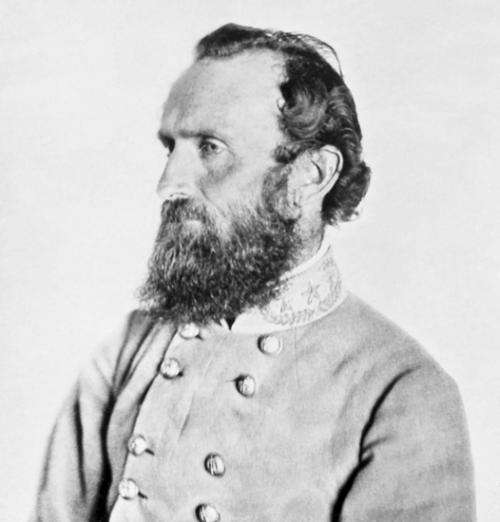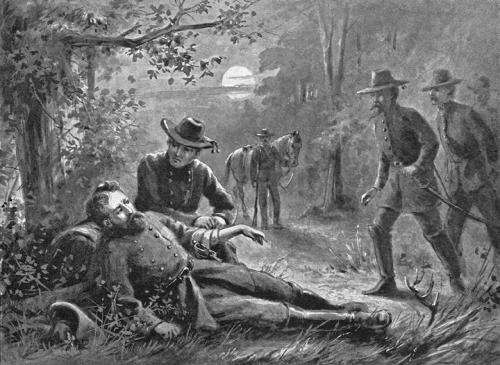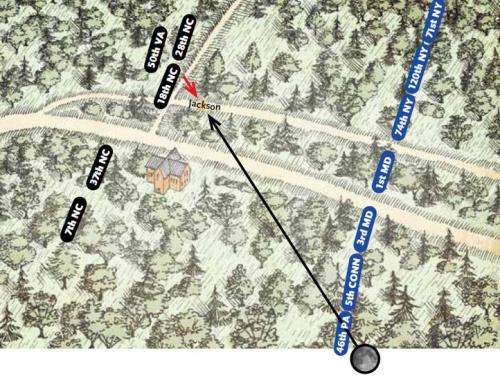Celestial sleuths shed (moon) light on death of Stonewall Jackson

One of the turning points of the U.S. Civil War occurred during the Battle of Chancellorsville, May 2, 1863, when Confederate Lieutenant General Thomas J. "Stonewall" Jackson was mistakenly shot by his own troops and later died of complications from his wounds. His death deprived Confederate commander Robert E. Lee of his most daring and trusted general two months before the fateful Battle of Gettysburg.
Almost from the day of Jackson's wounding, historians have debated the central question: How could the soldiers of the 18th North Carolina regiment not recognize their famous general and gun him down? Now, on the 150th anniversary of the historic event, astronomer Don Olson of Texas State University and Laurie E. Jasinski, Texas State graduate and editor of The Handbook of Texas Music, Second Edition, have answered that perplexing question by looking to the moon.
Olson and Jasinski publish their findings in the May 2013 issue of Sky & Telescope magazine, on newsstands now.
Moon Over Chancellorsville
The Battle of Chancellorsville is an outlier among Civil War clashes in that the fighting continued well after sunset on May 2. The Union army was in disarray after being routed by Jackson's famous "flank attack" in the late afternoon. Jackson hoped to cut off their lines of retreat, and a bright full moon allowed the rarity of night combat to continue. Many scholars after the fact claim the night was very dark, but eyewitness accounts testify otherwise.

"The moon was shining very brightly, rendering all objects in our immediate vicinity distinct…." wrote Confederate Captain William Fitzhugh Randolph in The Confederate Veteran, December 1903. "The moon poured a flood of light upon the wide, open turnpike,"
Jackson, along with Randolph and several other staff officers, rode ahead to scout out possible routes that could be used to get between the Union army and the fords and pontoon bridges along the Rappahannock River. As the party returned from their reconnaissance expedition at approximately 9 p.m., a Confederate officer on the left wing of the 18th North Carolina regiment spotted them through the trees by the moonlight, and, mistaking the group for Union cavalry, ordered his men to open fire. Jackson was wounded by three bullets—two in his left arm and one striking his right wrist. Upon hearing of the wounds that forced the amputation of Jackson's arm, Lee lamented, "He has lost his left arm; but I have lost my right arm."

Looking to the Light
But if the full moon shone so brightly, how did Jackson's own troops mistake his party for Union cavalry? The answer lies in the position of the moon. Using detailed battle maps and astronomical calculations, Olson and Jasinski determined that the 18th North Carolina was looking to the southeast, directly toward the rising moon. Reaching 25 degrees above the horizon at 9 p.m., the bright moon would've silhouetted Jackson and his officers, completely obscuring their identities.
"When you tell people it was a bright moonlit night, they think it makes it easier to see. What we are finding is that the 18th North Carolina was looking directly toward the direction of the moon as Stonewall Jackson and his party came riding back," Olson said. "They would see the riders only as dark silhouettes. Now, 150 years later, we can explain why they didn't recognize this famous Confederate general. Our astronomical analysis partially absolves the 18th North Carolina from blame for the wounding of Jackson."
Provided by Texas State University


















